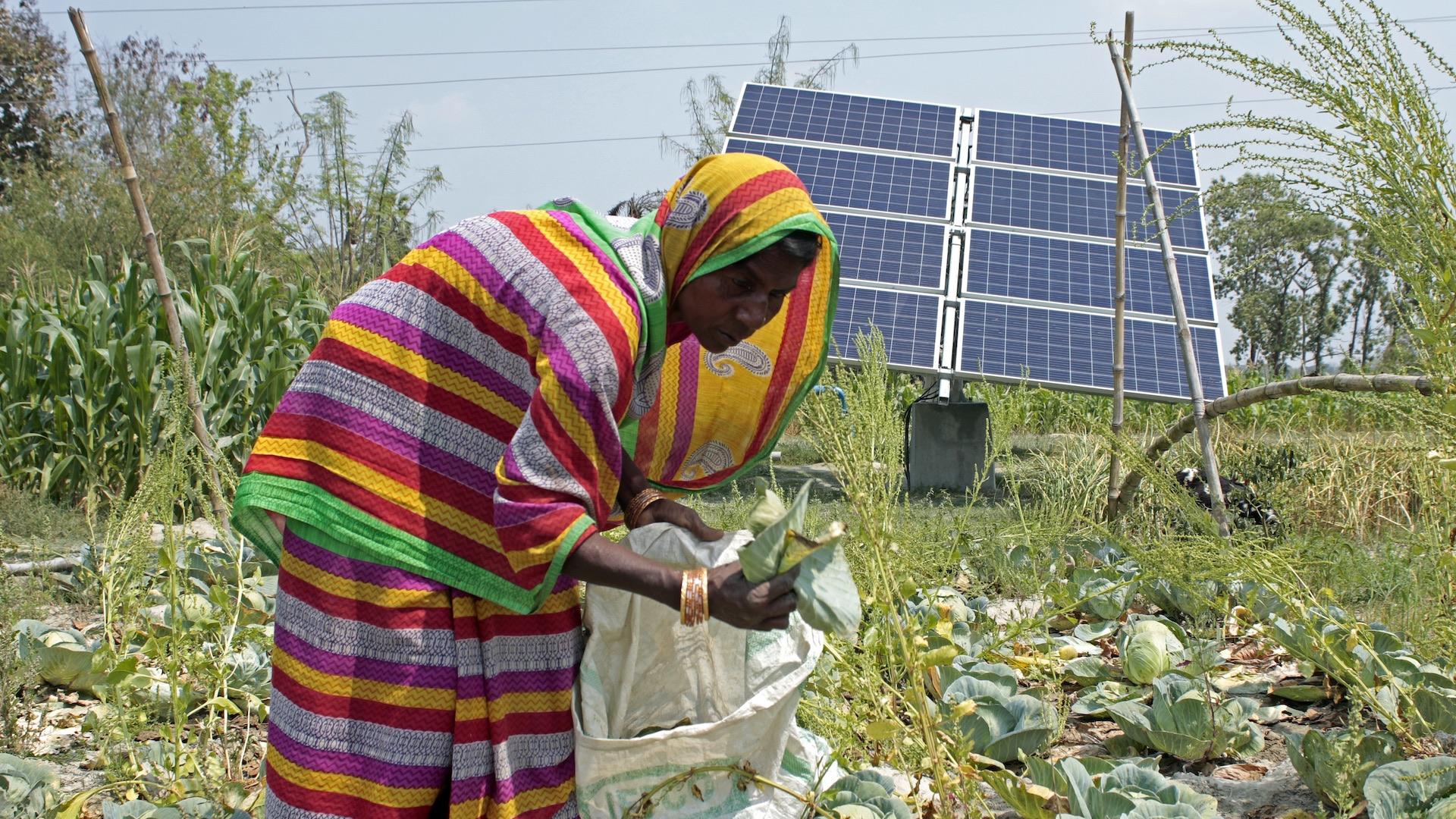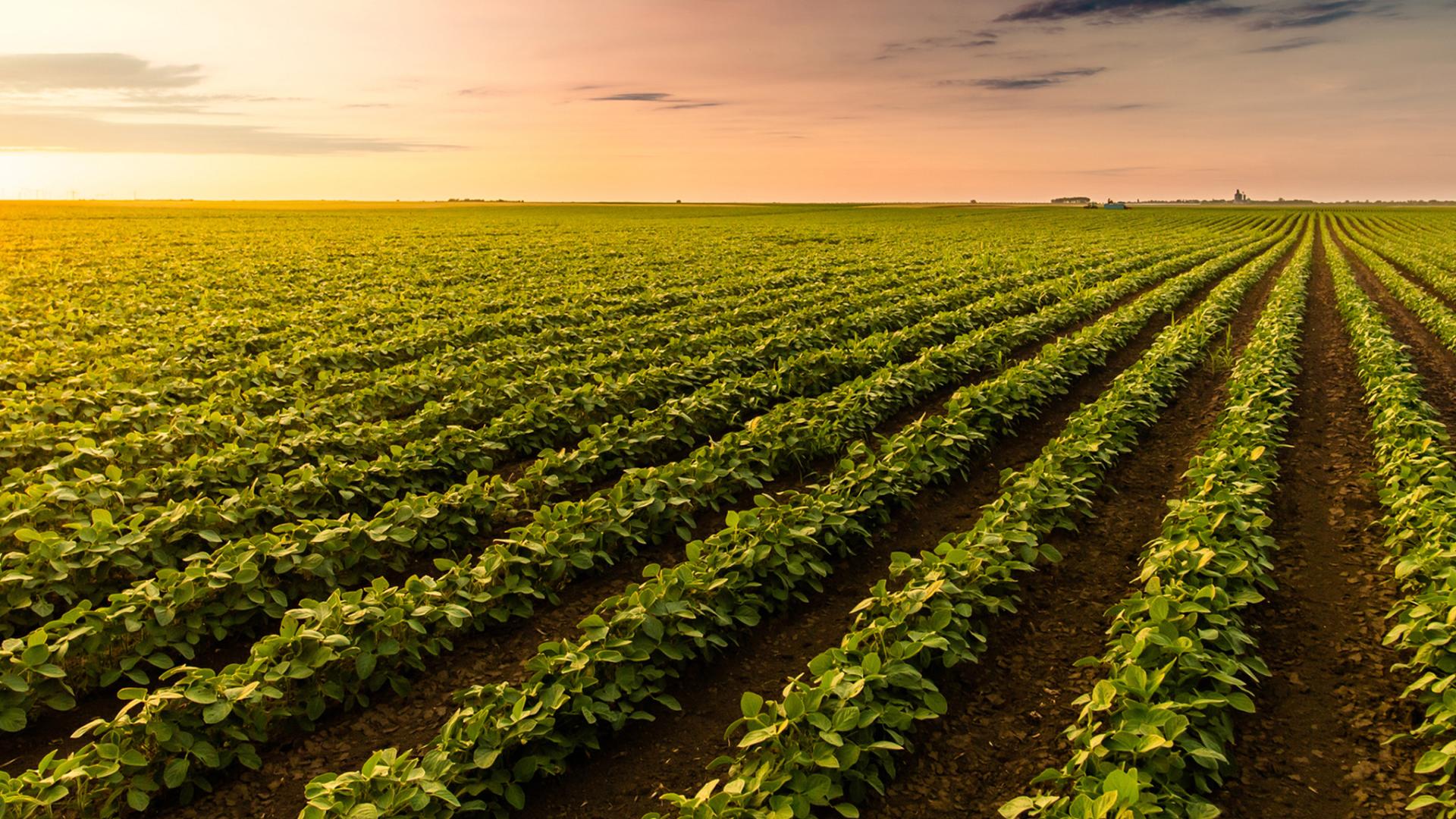New IPCC report highlights urgent need to advance climate solutions and development simultaneously

In addition to reducing carbon emissions, climate solutions like Conservation Agriculture, Nutrient Management, and Distributed Solar Photovoltaics can be combined to improve people’s food security, access to water and electricity, and income, which can lead to positive ripple effects across their lives.
Credit: Ayush Manik (Independent Consultant) | CGIARLast week’s release of the UN’s International Panel on Climate Change (IPCC) synthesis report distills almost a decade of the latest climate science into an urgent, systemic call to action — imploring us to mobilize resources to tackle climate change and poverty at the same time if we are to ensure a just and sustainable future. Thankfully, climate mitigation solutions already exist for tackling both of these grand challenges of our time simultaneously.
The synthesis report shows that 1) global greenhouse gas emissions continue to increase despite international pledges and 2) we are almost out of time to limit warming to 1.5 ℃. Pathways still exist to avert breaching this level of warming. They will require a holistic approach that not only mitigates, adapts to, and accounts for loss and damages from climate change but also provides credible development pathways for low- and middle-income countries, a cornerstone of climate justice.
The report also makes clear that mitigation activities will be necessary in both high-income and low- and middle-income countries (LMICs). There is an unequal burden placed on LMICs, recognizing that they have contributed the least to historical emissions. LMICs not only need to pursue mitigation and adaptation simultaneously, but they must also be able to align their necessary development with their climate goals. Ensuring LMICs have an accessible pathway to sustainable development is both a matter of climate justice as well as a preventive measure against exacerbating health issues and future loss and damages; as the report notes, those experiencing extreme poverty are the most vulnerable to climate hazards.
With more than 700 million people experiencing extreme poverty worldwide, supporting locally-led mitigation and adaptation efforts must catapult to the top of the priority list for the global community. The 2022 IPCC summary report on mitigation, which the synthesis report drew upon, indicated that mitigation activities that were implemented “in the context of sustainable development, equity, and poverty eradication, and rooted in the development aspirations of the societies within which they take place, will be more acceptable, durable and effective.” In other words, climate and development must be addressed synergistically.
A previous IPCC summary report on adaptation and vulnerability, another body of work that the synthesis report drew from, identified climate change as a significant barrier to achieving the Sustainable Development Goals (SDGs). Not only does climate change limit available resources needed to achieve the SDGs, but currently communities and countries are experiencing climate-induced impacts to local infrastructure, livelihoods, health and resilience efforts. Climate vulnerable communities — which typically lack access to vital resources to prepare for and build back from disasters — increasingly face more severe and/or frequent extreme weather events that pose great challenges to their development.
The global community must begin prioritizing climate solutions that also address poverty and well-being in order to leverage the most secure footing for the future. Project Drawdown has identified 28 climate mitigation solutions with co-benefits in areas such as energy, food security, income and work, water and sanitation, health, gender equality, education, access to networks, housing, social equity, peace and justice, and political voice. These co-benefits will be essential to recognize in climate initiatives — especially in LMICs — to advance and achieve interconnected international goals such as those set out in the Paris Agreement and the SDGs.
The 28 solutions include five key sectors: 1) improving agriculture and agroforestry, 2) protecting and restoring ecosystems, 3) adopting clean cooking, 4) providing clean electricity, and 5) fostering equality. In addition to the co-benefits listed above, these initiatives could reduce or sequester greenhouse gasses by 691.4 gigatons of CO2-eq over 30 years. Furthermore, these solutions are particularly applicable to rural communities in Africa and South Asia where 85 percent of the world’s population experiencing extreme poverty reside.
There is an enormous opportunity for properly designed and implemented policies for low-carbon and resilient growth that can also help address poverty and inequality, enabling people to live healthier, more prosperous lives.
At its core, addressing climate, poverty, and human well-being simultaneously is a matter of climate justice. As defined by the Climate Justice Playbook, “climate justice means advancing climate solutions that link human rights and development in a human-centered approach, placing the needs, voices and leadership of those who are most impacted at the forefront.” Climate justice must be an integral part of a societal transition. We can no longer afford to take a siloed approach to mitigation, adaptation, development, and justice — they must all become part of a holistic, integrated approach.
The latest AR6 synthesis report will be the last we hear of IPCC assessments until just two years before 2030. This report demands that we seize the opportunity to mobilize resources to address both climate and poverty immediately and urgently, as the challenges will only grow exponentially larger in the future. Implementing climate solutions with proven co-benefits for poverty alleviation and human well-being offers our best chance at achieving a sustainable and thriving future for current and future generations.
Press Contacts
If you are a journalist and would like to republish Project Drawdown content, please contact press@drawdown.org.



